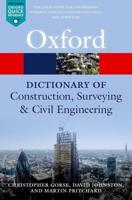Publisher's Synopsis
There is currently an upsurge of interest in the application of uoyancy-driven displacecment ventilation systems and chilled-ceiling devices in the office environment within the UK's heating, ventilation and air-conditioning industry.;As part of a series of research projects in the field of displacement ventilation, the BSRIA has undertaken a programme of work to investigate whether it is feasible to combine displacement ventilation systems and chilled ceiling devices while still maintaining adequate levels of thermal comfort and a predominant upward air movement. These studies were achieved by using both physical measurements and numerical modelling based on computational fluid dynamics (CFD) techniques.;When displacement ventilation without cooled ceilings was considered, the airflow patterns were chiefly upward when the internal thermal loads were equivalent to the cooling capacity of the displacement ventilation system. On condition that the supply air temperature and air velocity were maintained within recommended values, a high order of thermal comfort and air quality were predicted.;The addition of chilled beam devices to offset higher internal thermal gains progressively eroded the predominant upward air flow region as thermal loads were increased. Indeed, when the cooling load of the chilled ceiling devices was about three times that of the displacement ventilation system, the flow field was virtually similar to a conventional mixed airflow system, except in the vicinity of heat sources where upward convective plumes entrain air from the displacement cool air layer at floor level. The simulation of displacement ventilation with chilled panels, however, showed that the radiant cold panels slightly increased the depth of the mixed warm and contaminated upper region, but it did not affect the displacement airflow characteristics of the lower part of the room. The environmental thermal comfort conditions, however, were of a very high order in all cases considered.









